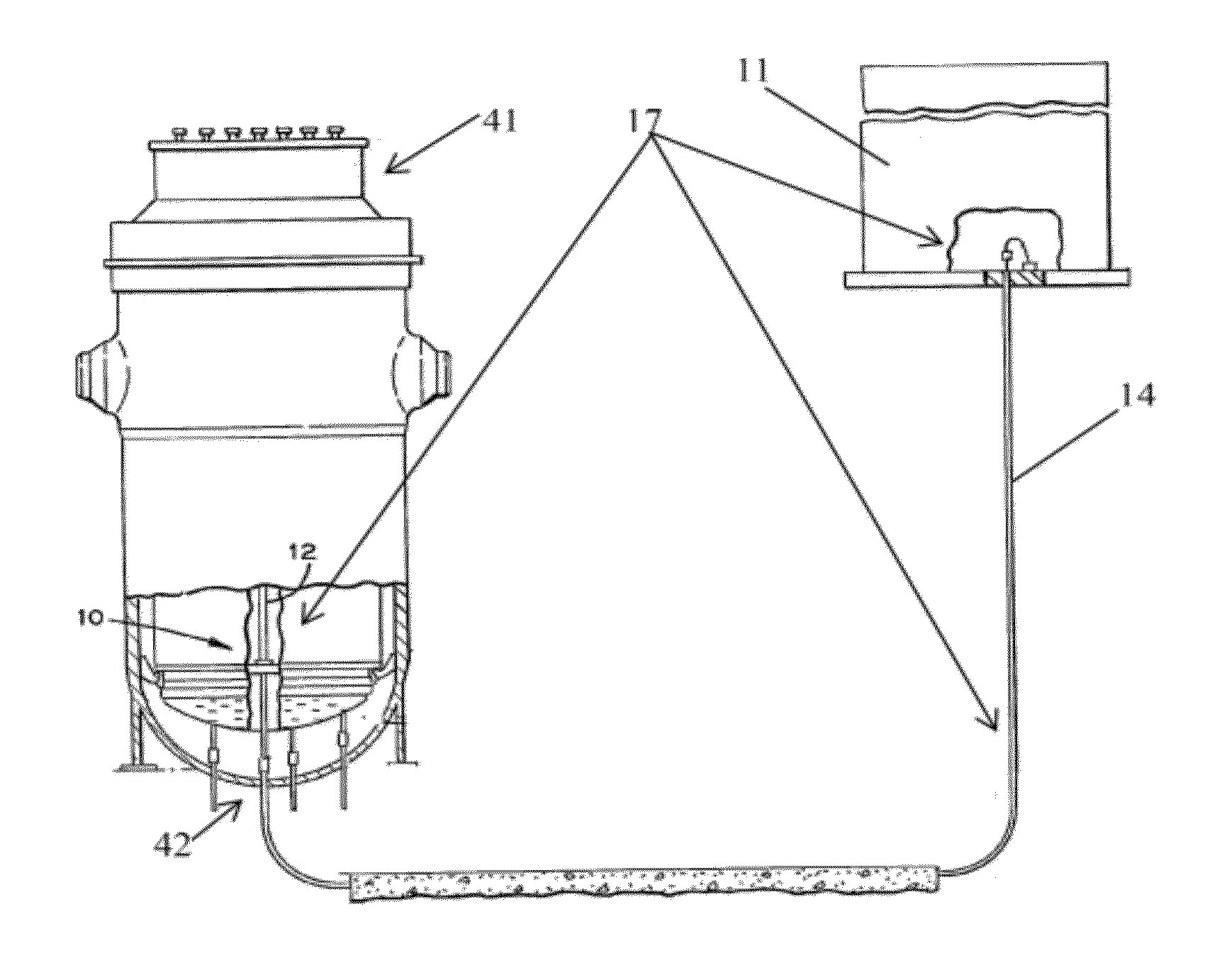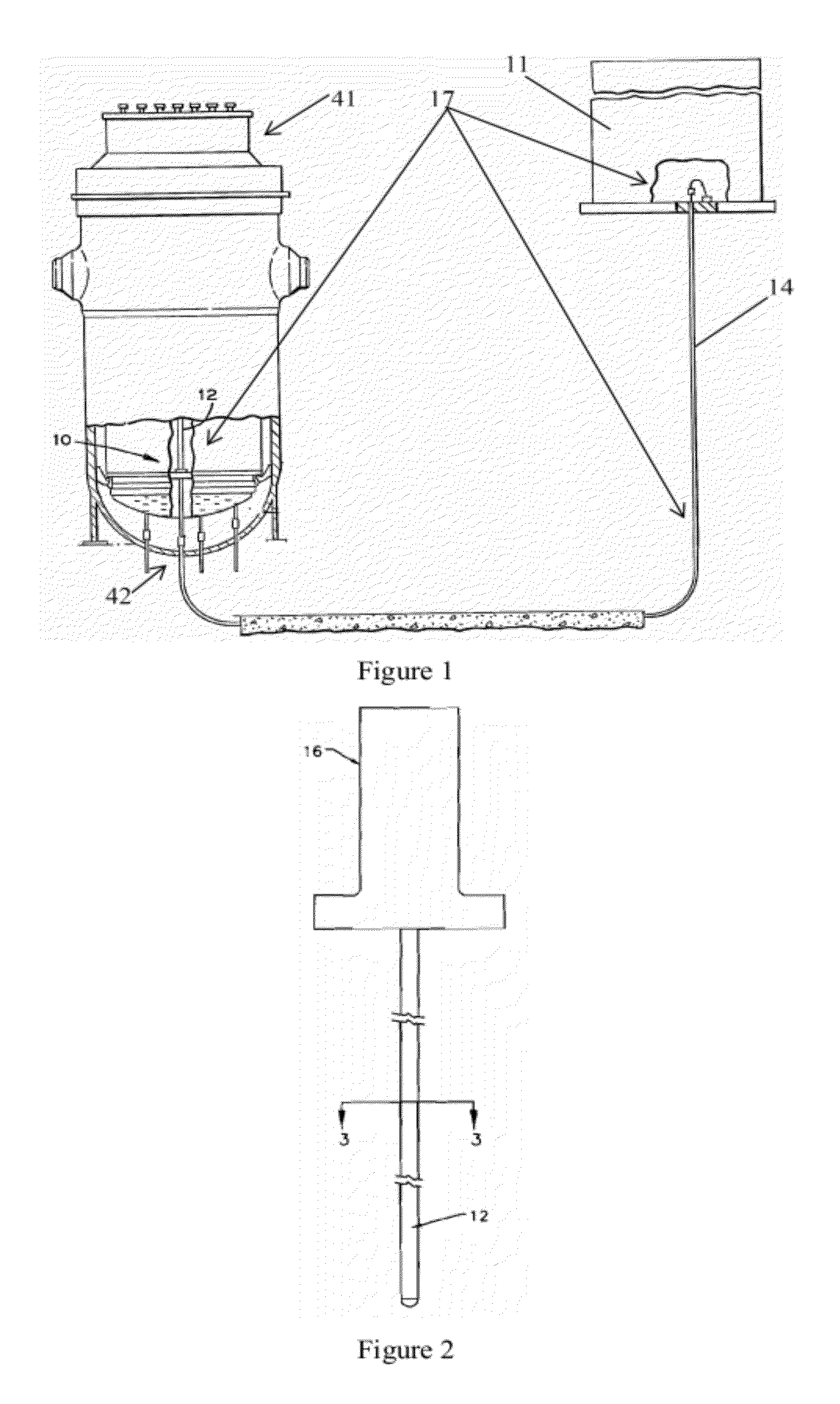Self-calibrating, highly accurate, long-lived, dual rhodium vanadium emitter nuclear in-core detector
a self-calibration, in-core detector technology, applied in nuclear elements, instruments, greenhouse gas reduction, etc., can solve the problems of depletion of rhodium detector sensitivity, delay in monitoring the neutron flux with the calibrated vanadium self-powered neutron detector, etc., and achieve the effect of significantly different life of the neutron detector
- Summary
- Abstract
- Description
- Claims
- Application Information
AI Technical Summary
Benefits of technology
Problems solved by technology
Method used
Image
Examples
Embodiment Construction
[0033]The present invention is directed to a method and an apparatus in which the signal from a first self-powered in-core neutron detector is calibrated using the signal from a second self-powered in-core neutron detector in the core of an operating nuclear reactor, such that the second in-core neutron detector is used as a calibration reference. Preferably, the nuclear reactor is a light water reactor, such as a pressurized water reactor (PWR) or a boiling water reactor (BWR).
[0034]Preferably, the self-powered neutron detectors used in the invention are those of the type disclosed in U.S. Pat. No. 3,375,370. Such self-powered in-core neutron detectors have an emitter, formed of a conducting or semiconducting material that emits electrons as a result of neutron irradiation, a collector that produces few electrons compared to the emitter when exposed to a neutron flux, and an insulator between the emitter and collector, where the electrical properties of the insulator preferably rem...
PUM
 Login to View More
Login to View More Abstract
Description
Claims
Application Information
 Login to View More
Login to View More - R&D
- Intellectual Property
- Life Sciences
- Materials
- Tech Scout
- Unparalleled Data Quality
- Higher Quality Content
- 60% Fewer Hallucinations
Browse by: Latest US Patents, China's latest patents, Technical Efficacy Thesaurus, Application Domain, Technology Topic, Popular Technical Reports.
© 2025 PatSnap. All rights reserved.Legal|Privacy policy|Modern Slavery Act Transparency Statement|Sitemap|About US| Contact US: help@patsnap.com



